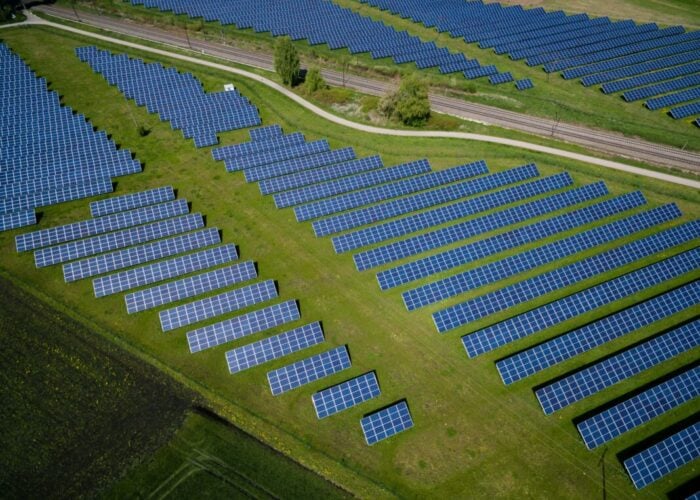
Rising interconnection costs and constraints are impacting Japan’s ability to contract large-scale solar capacity, according to a project winner in the country’s latest PV auction.
The fifth solar auction, the results of which were released this month, awarded just 39.8MW of PV out of 416MW available, with the largest project size standing at just 2MW. The previous auction had also been dominated by small-scale PV systems.
Unlock unlimited access for 12 whole months of distinctive global analysis
Photovoltaics International is now included.
- Regular insight and analysis of the industry’s biggest developments
- In-depth interviews with the industry’s leading figures
- Unlimited digital access to the PV Tech Power journal catalogue
- Unlimited digital access to the Photovoltaics International journal catalogue
- Access to more than 1,000 technical papers
- Discounts on Solar Media’s portfolio of events, in-person and virtual
It is already well known that utility-scale solar is hit by land constraints in Japan. However, Eva Pauly, International Project Development Director at France-based firm Ciel & Terre International, which won a 1.98MW project in the latest auction, has outlined to PV Tech a number of other key reasons why project sizes in the latest auction were so limited.
For both medium and high voltage projects, the costs are already very high for obtaining an interconnection with utilities, she said, but companies are now also seeing an increase in these costs.
Meanwhile, there are constraints around the capabilities of the interconnections available. Announcements by utilities regarding this, suggest that solar operators would have to cut power if needed, perhaps for long periods of time. Some prefectures are more affected than others and this is a concern for PV project developers in those areas, added Pauly.
Connecting to a substation is also a very long process and can be extremely expensive, she said. Meanwhile, there is more injection capacity in medium voltage (MV) than in high voltage (HV), since HV projects have to be very close to a substation – another factor limiting the sizes of PV projects.
This was echoed by Franck Constant, president of solar and storage developer Constant Energy, and co-founder at Sonnedix Group – a highly active developer in Japan, who said: “The relative time to upgrade transmission lines by utilities results in interconnection limitation, forcing higher cost of interconnecting to new projects, thereby reducing the number of viable new projects.”
Dim large-scale future
Constant also explained how the East Asian nation's ailing subsidy regime is thwarting utility-scale solar hopes.
“The costs to develop and build renewable projects in Japan are still high compared with international standards, but in the past, a higher feed-in tariff (FiT) than other parts of the world had allowed Japan to overcome this challenge, resulting in a large volume of projects being submitted,” he said.
“The Japanese PV market, however, is in a transition phase and the clearing price for auctions only allows a fairly low tariff to be provided. At present, the conditions for a similar build-up as in the 2013-2018 years of large ground-mount PV under a fixed FIT are not there and we see only a trickle of new megawatts permitted, versus the size of the country,” he added.
Despite the downturn, one segment that has been gaining traction is household solar and energy storage, the deployment of which has been rising in the wake of the dampened large-scale PV sector.
Constant also suggested that if the regulator supported the development of corporate PPAs, this could breathe life back into solar deployment en masse in Japan.
As an expensive location to produce energy, to benefit from economies of scale, Japan does need bigger projects, said Pauly – adding: “But with the land constraints and the utility constraints, I think that’s going to be harder to see a large amount of significant-sized projects.”
In parallel with these developments, as the market for new projects continues to shrink since 2018, a number of developers are exiting the market and the market is consolidating, said Constant, noting that incumbent utilities are “aggressively catching up” and buying position in renewable operating portfolios and independent renewable IPPs.
Future price drops also limited
Asked about the prospects of a sixth solar auction in Japan, Pauly forecast that there would likely be another auction but she did not expect a drastic drop in tariffs.
“Ultimately, I don’t see the price going down a lot because we see developers struggling already to finance projects at the 12 yen (US$0.11) mark,” she said.
This would be a blow for the Ministry of Economy, Trade and Industry (METI) which switched to an auction-based model specifically to drive down PV costs.
Indeed, many developers at the latest auction would have been looking for project tariffs of 14 yen per unit or more with the feed-in tariff, said Pauly, and these players would have been confronted by the fifth auction ceiling price of just 13 yen (US$0.119).
In separate news, Japan is now grappling with its self-image as an exporter of coal power plants. Last week, environment minister Shinjiro Koizumi exposed a project in Vietnam in which Japan is involved that does not meet government standards for coal-fired thermal power plant exports. His remarks – widely reported in Japanese media – have drawn both praise and stark criticism.







